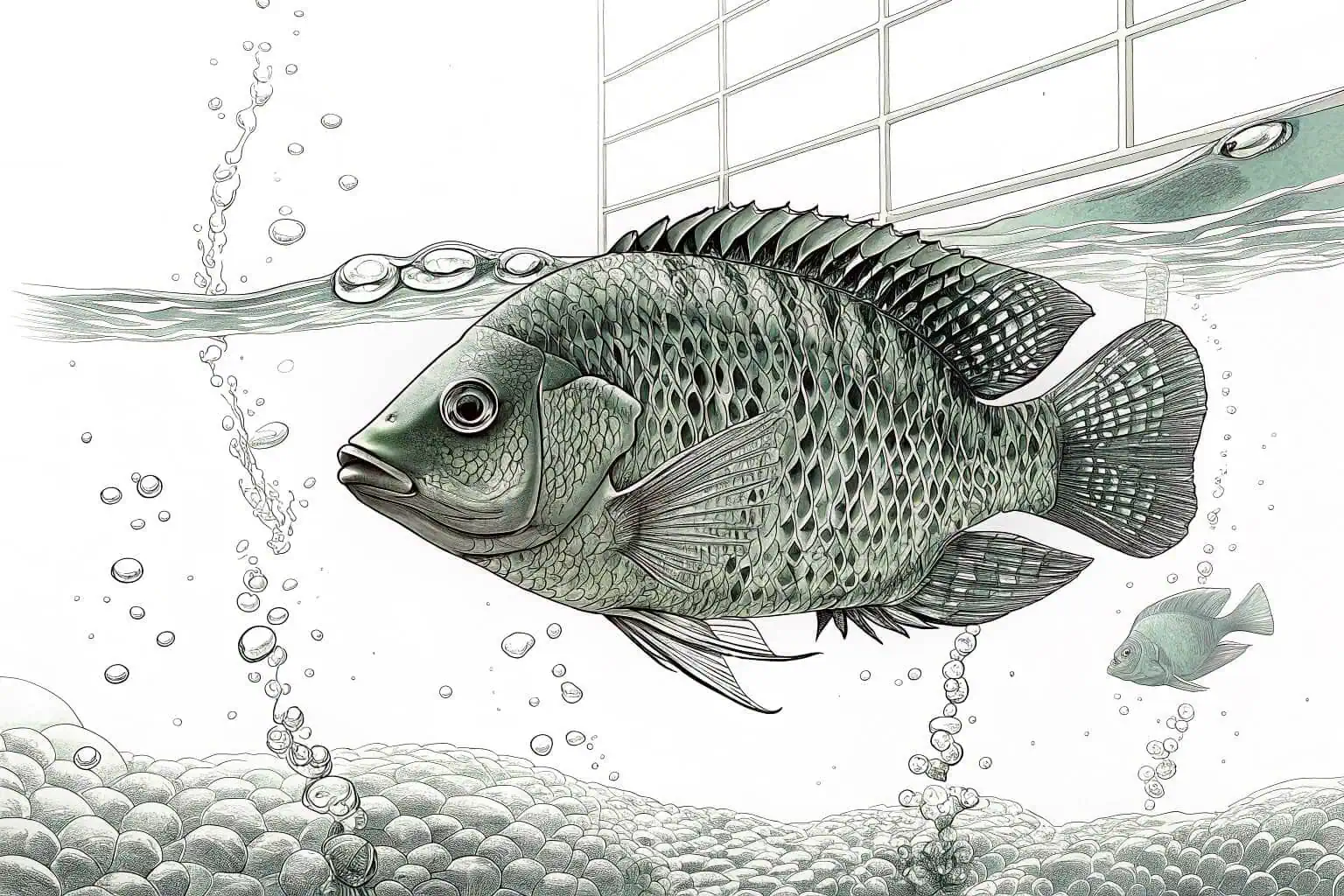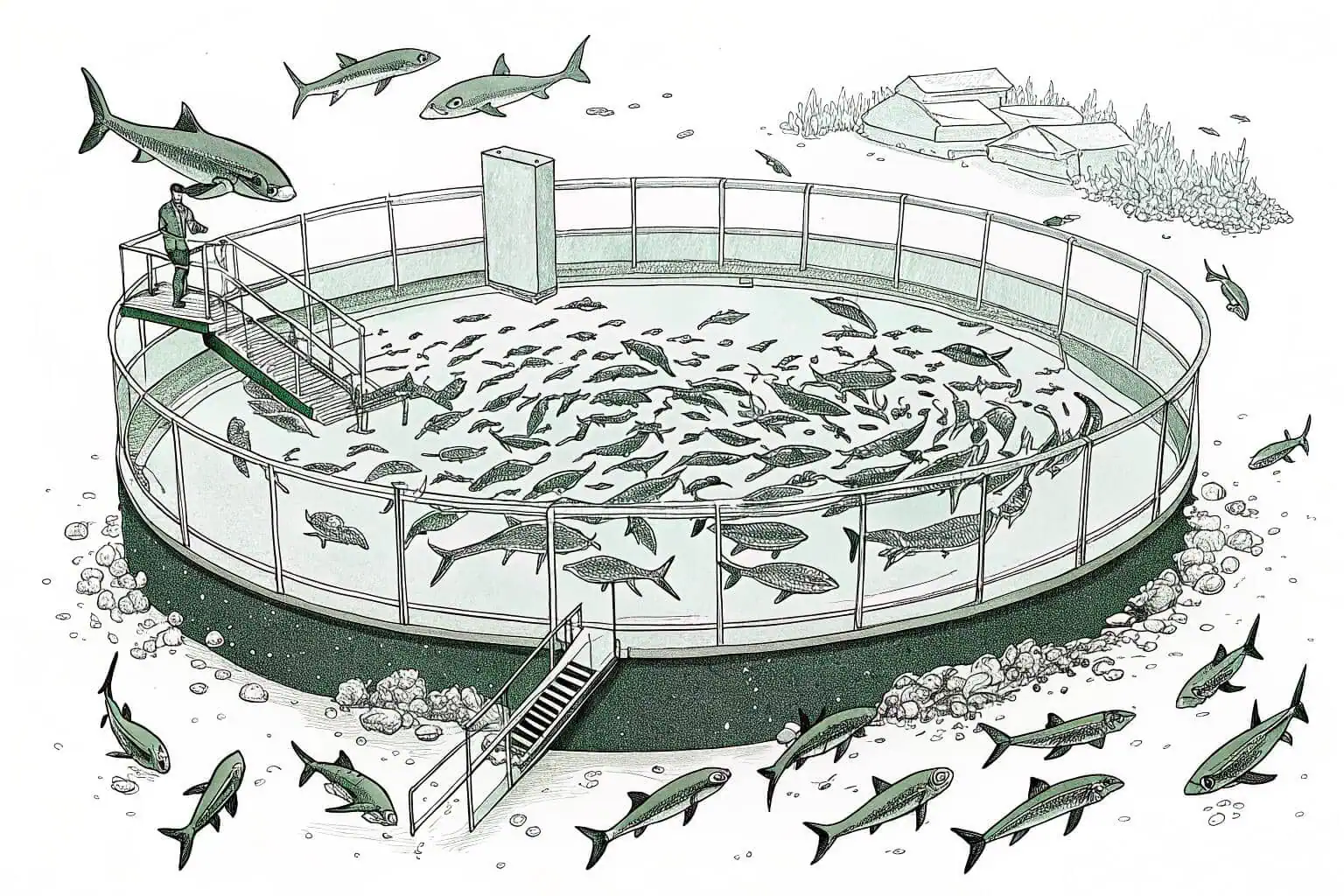What is the target market for fish farming?
Struggling to find your footing in the fish farming industry? You're not alone. The market is vast, but pinpointing your ideal customer is key to success.
The target market for fish farming includes diversified farm owners in agriculture who integrate aquaculture with crops, and commercial players in the fishery sector like wholesalers and retailers. These groups need reliable and scalable solutions to meet growing protein demands.

As someone who has watched this industry for years, I've seen how understanding your specific niche can make or break a business. It's not just about raising fish; it's about connecting with the right people who need your product. Let's break down where the real opportunities are.
What is the target market in agriculture?
Are your crops underperforming? Integrating fish farming can feel complex. But what if it could naturally boost your farm's entire output and create a new revenue stream?
In agriculture, the target market is diversified farm owners. They use fish farming to create a closed-loop system, where fish waste fertilizes crops, improving soil health and increasing overall farm productivity. This approach supports sustainable and profitable farming.

I've seen many farmers transform their operations by adding fish ponds. It's a smart way to make your resources work harder. Instead of buying expensive fertilizers, you can use nutrient-rich water from the fish pond to irrigate your fields. This is a core principle of aquaponics and integrated multi-trophic aquaculture (IMTA)1.
How Integrated Systems Create Value
Integrated farming2 is all about synergy. The waste from one part of the system becomes a valuable input for another. In this case, fish produce ammonia-rich waste. Beneficial bacteria convert this into nitrates, which is the perfect food for plants. This creates a self-sustaining cycle where you get two products—fish and vegetables—from one system. It’s an incredibly efficient way to farm, and it’s why so many modern farmers are adopting it. They see it not just as a way to cut costs, but as a way to build a more resilient and productive farm.
Key Benefits for Diversified Farmers
For farmers looking to diversify, adding aquaculture is a game-changer. It's not just about the extra income from selling fish. It's about improving the entire farm's ecosystem.
| Benefit | Description |
|---|---|
| Resource Efficiency3 | Fish waste provides natural fertilizer for crops, reducing costs. |
| Increased Revenue4 | Selling fish creates a new income stream for the farm. |
| Improved Soil Health5 | Organic matter from the pond enriches the soil over time. |
This synergy is not just theoretical. I've worked with farmers who started with a small, collapsible fish tank and saw immediate benefits. They were able to grow healthier vegetables and had a new product to sell at the local market. It’s about creating a more resilient and profitable farm ecosystem.
What is the market in Fishery?
The demand for fresh seafood is soaring, but supply chains are struggling to keep up. How can you tap into this lucrative market without getting lost in the competition?
The fishery market targets the commercial supply chain, including wholesalers, processing plants, and retailers. These businesses need a consistent and high-quality supply of fish to meet the demands of urban consumers, especially in high-growth regions like Asia.

When I look at the fishery market, I see a massive opportunity for producers who can guarantee quality and consistency6. It's a B2B world where relationships are key. Wholesalers need to know they can rely on you for a steady supply, week after week. Processing plants need fish that meet specific size and quality standards.
Understanding the Commercial Supply Chain
The fishery supply chain7 is a network of businesses working together to bring seafood from the farm to the table. It starts with you, the producer. From there, the fish move to wholesalers and distributors who have the logistics to transport large quantities. Then, they go to processing plants for filleting, packaging, or smoking. Finally, they end up in supermarkets, restaurants, and local fish markets. Each step adds value, but also complexity. Understanding the needs of each player is crucial. For example, a wholesaler might prioritize volume and consistency, while a high-end restaurant will focus on freshness and quality.
Major Players in the Fishery Market
- Wholesalers & Distributors8: They buy in bulk from farms and sell to retailers9 or restaurants.
- Processing Plants10: They handle cleaning, filleting, and packaging for value-added products.
- Retailers: Supermarkets and specialty seafood shops that sell directly to consumers.
High-Growth Regions and Opportunities
To succeed here, you need to think about logistics. How will you transport your fish? How will you maintain the cold chain? This is where having the right equipment, like easily transportable tanks for holding or temporary storage, can give you an edge. The market is especially hot in places like China and Vietnam, where seafood is a dietary staple and the middle class is growing rapidly. These markets present a huge opportunity for producers who can meet the demand for safe, high-quality seafood.
What is the goal of fish farming?
Is fish farming just about producing food? Many people think so, but its true purpose goes much deeper. It's about building a more sustainable and equitable future for everyone.
The primary goal of fish farming is to produce a reliable food source while creating rural jobs and reducing pressure on wild fish populations. It also aims to promote ecological balance by using resources efficiently and minimizing environmental impact.

I believe the mission of fish farming11 extends beyond just business. It's about responsibility. We have a growing global population and dwindling ocean resources. Aquaculture offers a viable solution. By farming fish, we can provide essential protein to communities around the world. It also creates jobs in rural areas, helping to strengthen local economies.
Balancing Economic and Environmental Goals
The best fish farms are those that find a balance between making a profit and protecting the planet. This isn't always easy. It means investing in technologies that reduce water use12, manage waste effectively, and minimize the risk of disease. But the payoff is huge. Consumers are increasingly willing to pay more for sustainably produced food13. And in the long run, a healthy environment is essential for a healthy business. It’s about thinking long-term and building a farm that can thrive for generations.
The Role of Technology in Sustainable Farming
Technology is a key ally in the quest for sustainable aquaculture. Innovations like recirculating aquaculture systems (RAS) allow farmers to raise fish in a controlled environment with minimal water exchange. This reduces the farm's environmental footprint and allows for production in areas where water is scarce. Similarly, using advanced, durable fish tanks made from non-toxic materials ensures the health of the fish and prevents contamination. These technologies are not just "nice to have"—they are becoming essential for any serious commercial operation.
Core Objectives of Modern Fish Farming
| Objective | Impact |
|---|---|
| Food Security14 | Provides a consistent and affordable source of protein. |
| Economic Growth | Creates employment in farming, processing, and distribution. |
| Conservation | Reduces the need to harvest wild fish, allowing stocks to recover. |
| Sustainability15 | Innovations like efficient feed and closed-containment systems lower the carbon footprint. |
What is the most profitable type of fish farming?
Want to start a fish farm but not sure which species to choose? Picking the right fish can be the difference between high profits and a struggling business.
Tilapia and catfish are often the most profitable for small to medium-scale farms due to their fast growth, hardiness, and strong market demand. For high-end markets, salmon and trout can yield higher profits, but require more significant investment in specialized equipment.

From my experience, profitability in fish farming comes down to a simple equation: market demand16 minus production cost. Tilapia and catfish are winners for many because they are very forgiving. They grow fast, can tolerate a range of water conditions, and don't require expensive feed. This makes them ideal for new farmers or those with limited capital.
Low-Cost vs. High-Value Species
The choice between low-cost, high-volume species17 and high-value, low-volume species18 is a critical one. Tilapia and catfish fall into the first category. You can produce a lot of them quickly and sell them at a reasonable price to a broad market. Salmon and trout are in the second category. They take longer to grow and require more specialized care, but they command a much higher price. There's no right or wrong answer here. It depends on your business model, your resources, and your appetite for risk.
Factors That Determine Profitability
Several factors beyond species selection will impact your bottom line. Feed costs19 are typically the biggest expense, so finding an affordable and nutritious feed is crucial. Energy costs for pumping and heating water can also be significant. And of course, market price fluctuations can make or break a season. The most successful farmers I know are those who manage these costs relentlessly. They are always looking for ways to be more efficient, whether it's by improving their feed conversion ratio or investing in energy-saving equipment20.
Profitability Comparison: Common Species
| Species | Key Advantages | Target Market |
|---|---|---|
| Tilapia | Fast growth, omnivorous diet, high disease resistance. | Broad consumer market, local sales. |
| Catfish | Hardy, thrives in high densities, popular in many regions. | Restaurants, local markets. |
| Salmon | High market price, strong consumer demand. | High-end restaurants, export markets. |
| Trout | Popular for recreational fishing and food. | Restaurants, specialty food stores. |
Conclusion
The fish farming market is full of opportunity. Success depends on finding your niche, whether in agriculture or fisheries, and using the right technology to grow efficiently and sustainably.
-
This resource will help you discover the advantages of IMTA, enhancing your farming practices and sustainability. ↩
-
Explore the advantages of Integrated farming to understand its efficiency and sustainability in modern agriculture. ↩
-
Explore how Resource Efficiency can enhance your farm's productivity and sustainability. ↩
-
Learn how diversifying into aquaculture can significantly boost your farm's income. ↩
-
Exploring this link reveals practical ways fish farming enhances soil quality, boosting farm productivity and sustainability. ↩
-
Learn best practices to meet standards and build trust with wholesalers and processing plants. ↩
-
Explore this resource to understand the detailed process of seafood from farm to table, which is essential for industry insights. ↩
-
Explore this link to understand how wholesalers and distributors optimize their operations for better efficiency and profitability. ↩
-
Exploring this resource will provide valuable insights into effective seafood selling strategies for retailers, boosting sales and customer satisfaction. ↩
-
Learn about the latest standards and techniques used by processing plants to maintain high-quality seafood products. ↩
-
This link will offer detailed information on the economic impact of fish farming and its role in creating jobs in rural communities. ↩
-
Discover innovative technologies that can help minimize water consumption and improve efficiency in fish farming operations. ↩
-
Explore this resource to learn effective methods for sustainable fish farming that benefit both the environment and your business. ↩
-
Explore this resource to learn effective methods for ensuring consistent and affordable protein sources. ↩
-
Discover innovative approaches to reduce environmental impact and promote sustainable aquaculture. ↩
-
Understanding market demand helps farmers make informed decisions about which fish to farm for maximum profitability. ↩
-
Explore this link to learn effective methods for producing and selling high-volume aquatic species like tilapia and catfish. ↩
-
Discover expert tips on raising high-value fish such as salmon and trout, which can significantly boost your profitability. ↩
-
Explore this resource to discover strategies for lowering feed expenses and improving farm profitability. ↩
-
Learn how investing in energy-efficient technology can significantly reduce operational costs and boost productivity. ↩